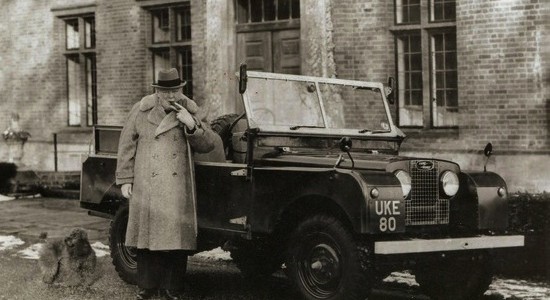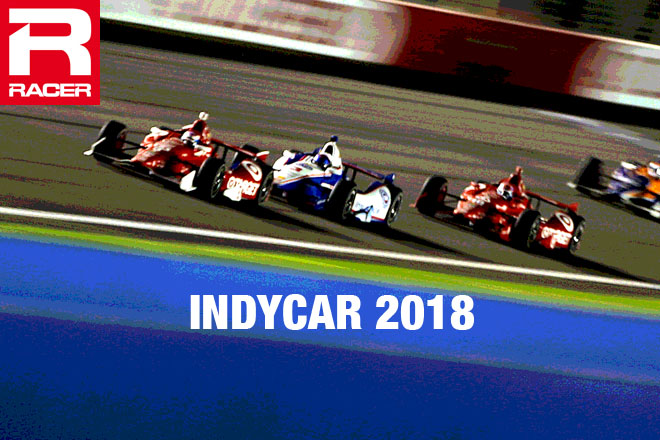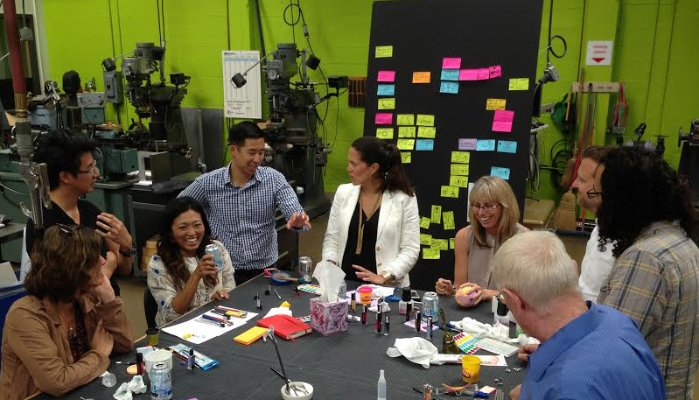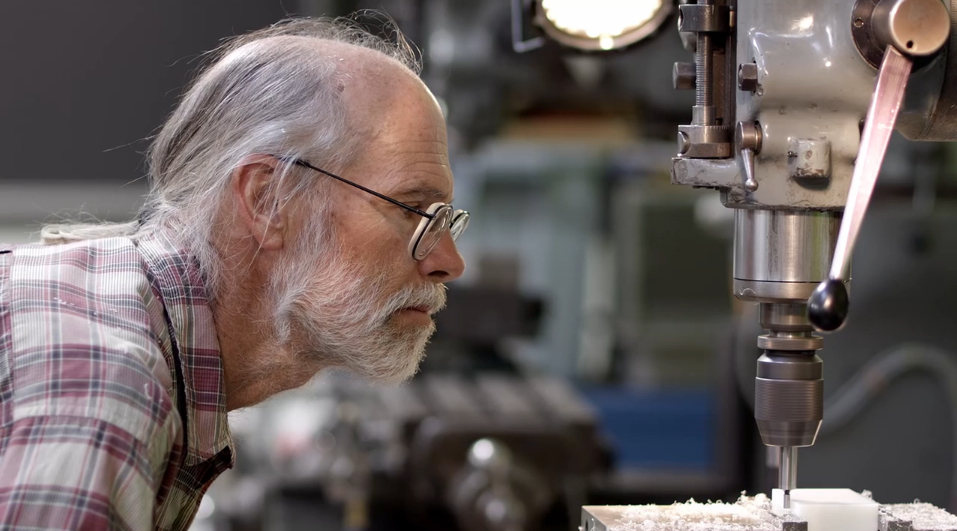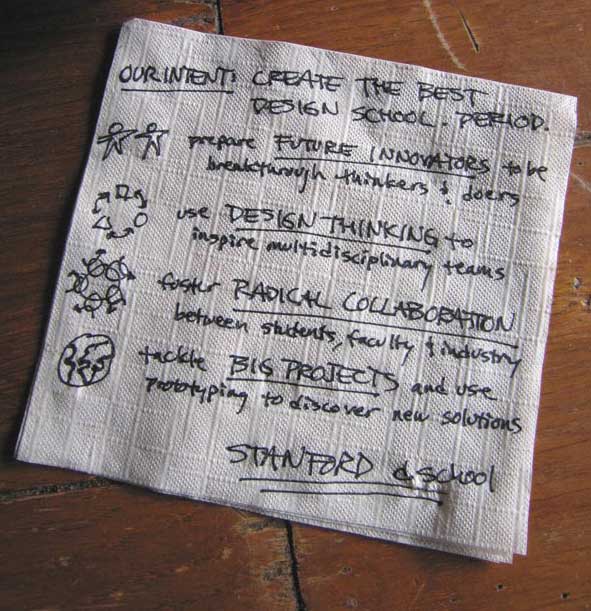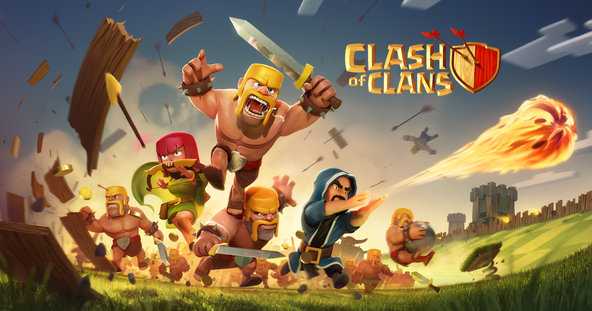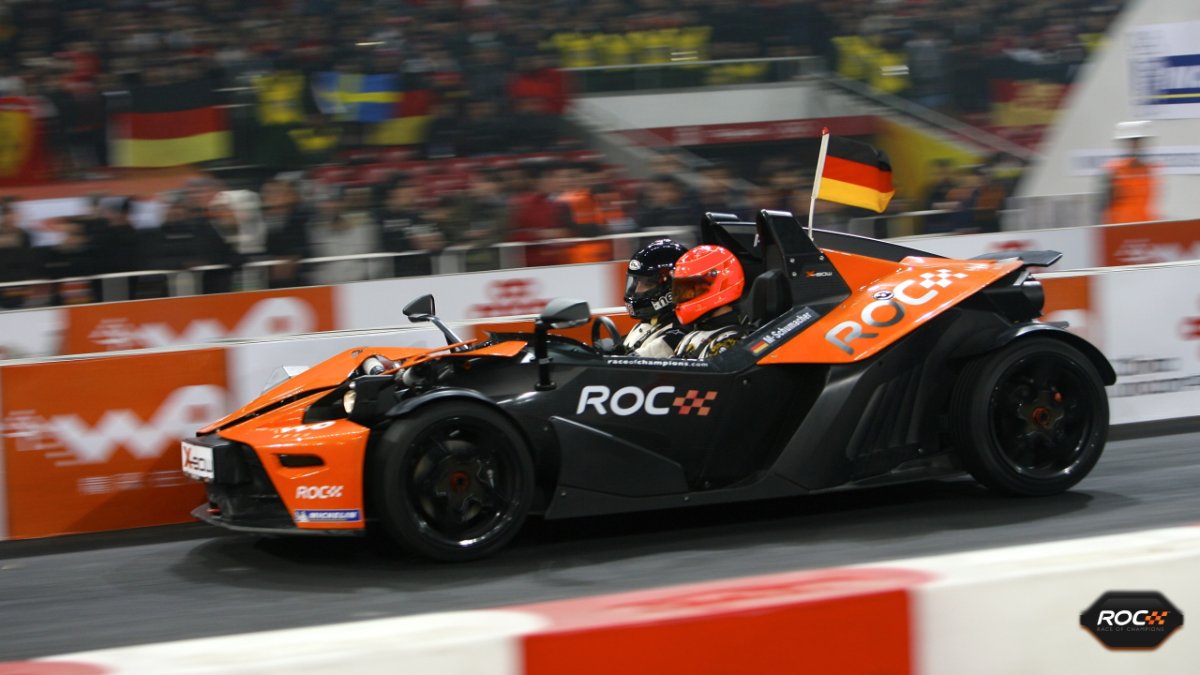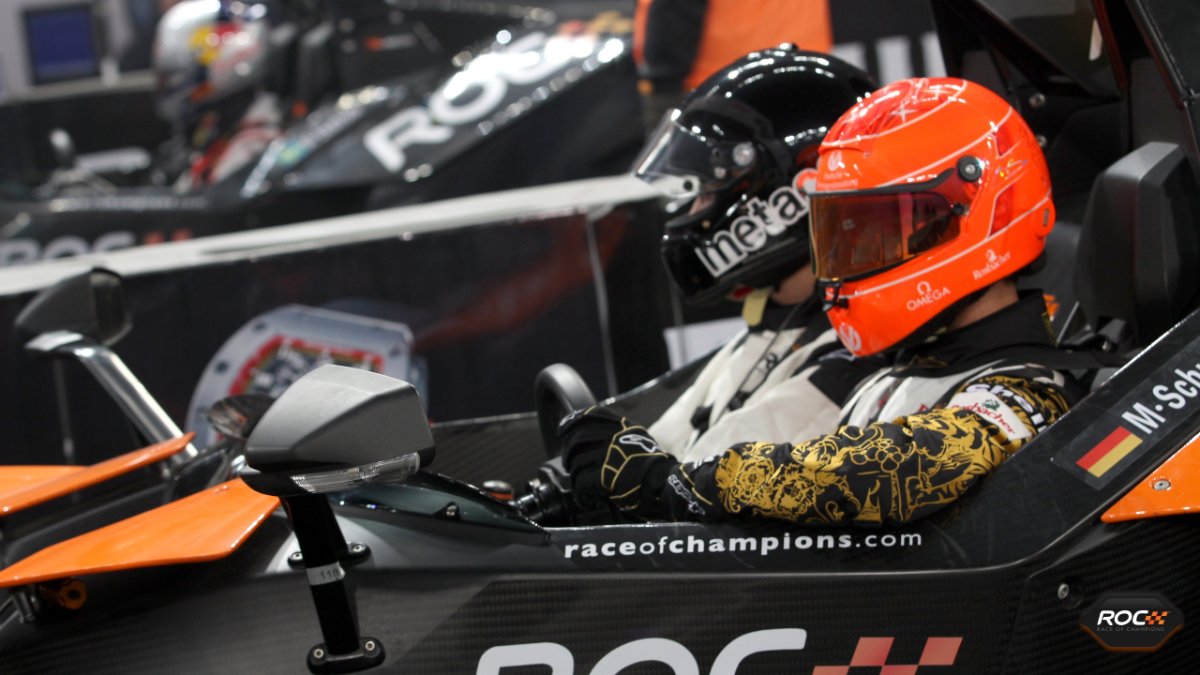Thinking about IndyCar 2018
A few weeks ago I wrote an essay for RACER about the future of IndyCar. It’s part of a series called “IndyCar 2018”. Here is an overview from RACER editor David Malsher:
Welcome to a new series exclusively by RACER. While manufacturer aero kits will be the biggest technical story of the 2015 Verizon IndyCar Series, somewhere just over the horizon is the next-gen IndyCar, due to start racing in 2018.
If that sounds a long way off, it is…but ideas and philosophies need time to take root, germinate and grow before they finally bloom. It may sound conceited, but it’s true nonetheless – at RACER, we have the attention of the people who can make a difference to the path taken by IndyCar. And that “we,” includes you, the readers of RACER, which is why you’re invited to participate.
Over the next couple months, we’re running interviews with, and essays from, the great and the good of IndyCar past, present and future, asking what they think IndyCar should be in 2018. Topics included will be the basic design of the car; what technology it employs; how open the rules should be regarding engines, chassis and bodywork; safety; embracing “green” science; circuits; energizing the business model for teams, promoters, manufacturers, sponsors.
Some brave souls may tackle all these topics – just as IndyCar personnel collectively have to – but generally, we’ve let the interviewees/writers choose their points of focus.
I endeavored to look at the entire sport of IndyCar as a business system. If you had to balance the human experience, the technology platform, and the business model, what choices might you make? What might be a guiding framework for those decisions? Overall there’s been a positive reaction to my thoughts, with some impassioned debate in the comments section below the essay and in Robin Miller’s weekly reader mail column.
In my mind’s eye I expected all of the IndyCar 2018 essays and interviews to be released at one time—Netflix House of Cards style—but I am finding the actual serialization to be a much more interesting approach. Having everyone in the community focus on one point of view at a time helps focus the conversation in a way that having a buffet of options would hinder. That said, I’m very much looking forward to seeing the complete oeuvre—the public conversation RACER is facilitating is a fascinating way to share ideas and encourage innovation.
The first of the series is an interview with Indy 500 winner and F1 World Champion Mario Andretti. The third is an essay by four-time Indy 500 winner Rick Mears. The thoughts from yrs trly were sandwiched between those two, and it’s an honor to be there. For my own convenience, I’ll add links below to each entry as they’re published. Enjoy!
Never attend a meeting without a prototype
If you’re at all like me, unproductive meetings are likely the bane of your existence. We’ve all been there: the conversation meanders, 50 minutes disappears from your life, and you’re no closer to your goal than when you started. At IDEO we dislike these kinds of meetings too. So we found a simple but elegant solution, captured by my colleague Dennis Boyle, in a saying I call “Boyle’s Law”:
“Never attend a meeting without a prototype”*
This law creates better meetings in three big ways. But before we get there, it’s worth asking: what is a prototype, exactly? We’re in the business of design and innovation at IDEO, and we use the word quite liberally. When I was a practicing engineer, a prototype was something that made a sound when you dropped it, but these days I define it as a single question made tangible. It’s lines of software code, a business model spreadsheet, or a few people acting out a service experience.
If it takes what’s in your head and creates something tangible that others can react to—if it helps probe the unknown—it’s a prototype. And I believe that you can prototype new ideas in your workplace, no matter its focus.
Expect three things to happen when you start bringing prototypes to your meetings:
First, a lot of your meetings will evaporate. Those that shouldn’t happen in the first place, the ones where nothing gets done, won’t. If you can’t bring a prototype of your latest thinking, there’s a simple solution: don’t have the meeting. Instead, focus your precious time and energy on making actual progress.
Second, the meetings you do have will be awesome. With something concrete in the room, discussions will be more productive and actionable, and the level of shared understanding and alignment will go through the roof. And instead of grappling with all the fears, doubts, uncertainties, worries, hidden agendas, and politics that bedevil any organization, you can focus all of that negativity on the prototype—it has no feelings or career prospects, and it just doesn’t care! As you critique, elephants in the room—the real problems at hand—will magically surface, ready to be addressed.
Finally, bring more prototypes to meetings, and you’ll boost levels of performance and engagement across your organization. Professor Teresa Amabile of Harvard Business School has shown that a sense of progress is the driving factor behind high levels of reported happiness and work satisfaction in the workplace. Not fancy coffee or bean bag chairs, just employees knowing that they’re making progress toward their goals. A prototype is an embodiment of all the work you’ve done, and it’s an easy, positive way to signal and celebrate forward motion. Meetings suddenly shift from being deep wells of dread to wellsprings of happiness.
But you say, I like meeting all the time! Well then, here’s another simple solution: create more prototypes! They’re the gift that keeps on giving.
So, what prototype are you going to bring to your next meeting?
* design engineering humor
Lessons on Innovating from OK Go
I’m more than a little obsessed with OK Go’s new video, I Won’t Let You Down. I love the tune, the choreography is impressive, and I can’t get over the chutzpah it takes to film a single-take video using an octocopter drone:
But what’s kept me coming back to watch it over and over are the lessons we can take from OK Go and their seemingly limitless appetite for innovating. Here are my top three:
1. Innovating happens when you embrace serendipity
You can’t think your way to an innovative outcome. Breakthroughs come from giving yourself the time to fool around with a bunch of random elements. By getting out of the office and doing stuff, you learn where to find the awesomeness you seek.
Here is how OK Go’s Damian Kulash describes the process of serendipity that fed this video:
What we try to do is get the best idea we can at that desk and then get out into the place where we’re going to be making whatever we’re going to be making and play with it a lot. We have a lot of trial and error, a lot of figuring out what does and doesn’t work. Usually, by the time we’re done with that process, the idea is pretty dramatically different from what we started with… And it means that we waste a lot of money and our production value is… we don’t shoot the world’s most clean and beautiful stuff, but we have videos that no one else could have.
This isn’t about waiting for inspiration from a muse, it’s about intentional serendipity, making your own luck via the hard work of experimentation and iteration. OK Go’s videos are so memorable because of the countless iterations they go through to get to the finished product. Because they’re careful to set the stage for serendipity to flourish, each cycle of experimentation increases the odds of them bumping into a piece of magic.
2. Business model innovations ripple through everything else
OK Go’s business model innovation was to choose a different metric: instead of tracking the number of albums sold—the usual measurement of success in the music industry—they focus instead on the passion of their followers.
OK Go made a decision early on to bypass radio and MTV and go directly to YouTube with its unique style of low-budget, single-take music videos. The resulting channel conflict (“You’re letting people listen for free? What about our sales?”) flew in the face of conventional wisdom about how to stay in business as a rock musician.
This unexpected choice is key to understanding the band’s ensuing success: when your goal is making your fans happy, you focus on the music and the videos and the quality of your tours, thereby setting up a virtuous cycle. Each time they create a video like I Won’t Let You Down, they affirm their relationship with existing fans, and win new ones. When it comes time to create their next video, their priorities will be in order, and mustering the courage and resources to do something even more spectacular will be relatively straightforward.
On the other hand, focusing on album sales means listening to a lot of people who may or may not care about the art—the marketing guys or the huge distributors. And that distracts you from doing the one thing you need to do as a rocker: create great, unique music. So here’s a question to ask yourself: is your business model helping you actually win at the thing you’re in business to do?
As it happens, those Honda UNI-CUBs piloted by OK Go are also the result of a business model innovation. In 1960 Takeo Fujisawa (an organizational design genius, and Soichiro Honda’s business partner) created Honda R&D as an entity independent of—but funded by—its parent Honda Motor Company. This structure was all about embracing serendipity. It gave Honda’s R&D scientists and engineers the permission to tinker and generally fool around with technologies that had no obvious short-term relationship to cars or even Honda itself. Over the years, Honda R&D has created many innovations that have eventually become mainstream hits.
3. Vision + Guts + Perseverance = Innovative Outcomes
The magic of many of OK Go’s videos is that they’re hugely creative performances done in just one massive, risky, glorious take. They couple a big vision with big guts. It’s the film equivalent of tightrope walking—one errant UNI-CUB and it’s back to frame one.
Pulling it off in grand style requires a ton of perseverance. The risks involved could lead to a diminished vision (“Why don’t we make this easier on ourselves?”) and a less vibrant performance (“I keep screwing up the choreography—I’ll dial back my grooviness”). But OK Go always has the guts to dream big, and the dogged perseverance to pull it off.
This specific video required around 2,300 people collaborating on about 60 practice runs and 44 filmed takes, 11 of which were done to completion. Of those, only three were of acceptable quality. Just imagine the emotional and logistical fortitude it takes to restart the filming process after a minor flub.
It’s the same with Honda. UNI-CUB isn’t even on the market yet, but Honda gave OK Go a second-generation iteration to use for this video. UNI-CUB literally stands on years of patient research that went into the company’s humanoid robot ASIMO and untold other projects that would seem to be unrelated on first glace.
It took 68 years to get here; back in 1946 Soichiro Honda wouldn’t have been able to imagine that his creation of Honda R&D would eventually lead to four men in black suits riding his company’s vehicles around on something called the “internet,” while thousands of women with bright umbrellas danced in psychedelic patterns. But that’s the nature of innovation—you don’t always know what the flower garden will look like, but that doesn’t stop you from planting the seeds.
So dream big, let it all get messy, and put in the hard work to make it happen.
And keep those umbrellas twirling.
How to Do the Best Work of Your Life
Jim Yurchenco is the design engineer behind everything from the first Apple mouse to the Palm V to the Plié Wand from Julep. He just retired from a 40-year career at IDEO creating products which brightened the lives of millions.
Jim’s work was also about helping everyone around him excel. I was fortunate to have Jim as a mentor, coach, and project leader at IDEO. I did some of the best work of my life working with him. And the “how” was great, too: we never pulled all-nighters, but we always hit our deadlines, routinely achieving extremely innovative outcomes.
How to do the best work of your life? Well, here is Jim’s secret:
“Don’t accept done for good. And don’t accept good for excellent.”
Jim’s approach to excellence is anything but passive. It is rooted in action, passionately and optimistically pursued. He’s never one to sit back and procrastinate, waiting for inspiration and perfection to magically appear. He is constantly thinking, building, pushing, failing, learning—always striving to figure out a way to make things better. All of this coupled with an urgency to make decisions quickly and be productive, but with the sage perspective to step back and let things percolate when need be. In Jim’s world, excellence is both something you pursue, and something that comes to the prepared.
One morning in the late 90’s, while noodling on ways to cool the chips in the Intel Pentium II cartridge we were designing, Jim decided that our pursuit of excellence demanded access to a temperature-controlled, variable-speed wind tunnel. Today. Of course, we didn’t have one. But by that evening, after scavenging all of Silicon Valley for parts and applying some scrappy ingenuity, we had a twenty-foot long wind tunnel up and running in an unoccupied office we found at IDEO (whose owner was mildly surprised when she returned from her business trip). And then we used that wind tunnel to create a breakthrough design solution.
When you’re committed to excellence—and when everyone you work with knows it—failure becomes a mere bump in the road along the way to success. Once you stop accepting good for excellent, you can transcend limitations that would stop a normal team. Scarcity becomes abundance, hurdles becomes ladders, and you start doing the best work of your life.
That’s how Jim did it. And you can too: commit to excellence, believe there’s always a better solution, and make it all happen with optimism.
You can hear more of Jim’s wisdom in this wonderful video:
How to teach a great class on design thinking
A decade ago I worked with George Kembel to create the Stanford d.school’s “napkin manifesto”, a founding document written on a paper square that came free with a cup of coffee. The thoughts we committed to paper that day reflected an audacious goal: Create the best design school in the world, period. I think it’s safe to say that the d.school has been a remarkable success, having had an impact far beyond what even our visionary founder David Kelley imagined.
I’ve learned so much as a teacher during that time, too. I’ve witnessed not only the evolution of the d.school, but the power of design thinking at work in many other arenas—everything from the development of more humane medical technologies to improving school lunch programs. I’ve been honored to participate in helping design thinking become a core part of the curriculum and culture at both Stanford and Harvard Business School, and to teach the design process to the client organizations I work with at IDEO.
So how do you create a great design class? By applying design thinking, of course! In essence, the way to teach a great design thinking class is to treat it as a design project. In this particular case, I’ve found three principles that lead to classroom success, each of them inspired by some general precepts that always serve me well.
1. Design thinking rewards hands-on experience.
It sounds obvious, but to teach design thinking, you need to be able to do design thinking. In any job, whether you’re a carpenter or a bioengineer, understanding the work from the inside out is always the best qualification to pass those skills to others. As a teacher, you need to be an accomplished creator of things out in the world, a master of using design thinking to ship. Theory is valuable and required, but being adept at the practice is by far the most important driver of success for both your students and you.
2. Design thinking thrives on feedback and iteration.
The most important ritual of our classes at the d.school is the daily debrief session. Instead of running to their respective offices when class is over, the teaching team gathers at the back of the classroom, reflects on how the session went, and listens to students’ feedback. The teachers then change class plans, move sessions around, even rethink the approach of the entire course. To be sure, when I teach I have a strong goal for what the class should accomplish, but in response to what this group of students needs right now I’m able to adjust our path there on the fly. It’s about having a compass, not a map.
3. Design thinking solves real-world problems.
Classroom projects have to be structured without artificial constraints or boundaries. When students feel that they are working on a real problem, the sky is the limit—no essays or fake projects allowed. This transforms the class experience: instead of focusing on the grade they’ll receive by hurdling yet another academic annoyance, students genuinely feel they’re working to make a difference in the world. For example, if a class is about creating a business, students should create a real business. If it’s about improving the water supply in developing countries, they should build a solution that puts a clean glass of water in the hand of someone who needs it. Here’s my acid test: if a student so desired, could they build a career around this challenge I’m giving them?
By applying these three principles to the design of a design class, we aim to make the d.school classroom the best education experience each student has ever had. But there’s no secret at work here; the guidelines we use are universal to the design process: Have a strong point of view and confidence in what you do, proceed with empathy and openness to feedback, and offer real solutions that improve the lives of real people.
Alex Zanardi: Touch the Sky
Innovation Lessons from Video Gaming
I’m a believer in William Gibson’s dictum that “the future is already here—it’s just not evenly distributed.” When I’m part of a team designing something new, we always search for inspiration from existing products that are running a few meters out in front of the pack. More often than not, the most future-forward ones are video games.
An edgy brew of technology, design, and business, video games are a wellspring of innovation. Moore’s law dictates that the processors they run on are always getting faster, and games in turn push computing technology to the max, so performance constantly rises. Games have to be reliable and desirable, a fiendish design challenge. Their complex algorithms must not only work perfectly, but also make us marvel in the beauty of their output. And we’re willing to pay for it: this year’s global video game spending is expected to surpass $100 billion. The competition for that big pie feeds a lot of radical business model innovation.
So if innovating is your business, why not shell out a few quarters on video game research? Not only is it a lot of fun, but you’ll learn a ton. Here are four ways video games can help you become a better innovator:
Experience World-Class Experiences
Good experiences bring you joy and make you happy, great ones get you to flow—that sense where time slows down and you’re in the groove. World of Warcraft (WoW) is a masterful flow-inducing game, with the best digital interaction design in existence. Period. With WoW, in the first ten minutes you’re given a challenge that’s just a little more difficult than you can handle, so you immediately experience learning and growth. Before you know it, you’re on the road to personal mastery. That feeling continues at ten hours, ten days, ten months, and beyond. For pointers on how to make flow happen with your own product or service, WoW is a master class. To see an analogous experience on a mobile device, check out Monument Valley.
Grok New Business Models
The rise of free app ecosystems, Facebook, and networked gaming environments has forced video game makers to focus on business model innovation. For example, WoW generates $1 billion in yearly revenue via a mix of upfront payments and monthly subscription fees. Others have created new ways to claim value by seamlessly interweaving payment with game play and narrative. Clash of Clans is among the very best at this, helping its developer Supercell rake in $892 million in revenue in 2013. Want that Level 5 P.E.K.K.A.? With just a couple of screen taps, iTunes processes your $19.99, and she’s ready to go bash down some Inferno Towers.
Become a Better Creative Leader
Creative leadership is about managing uncertainty, surfing serendipity, and navigating the future with a compass, not a map—all skills that video games often require. Great creative leaders are able to:
- communicate effectively with teams of diverse individuals
- make quick decisions in dynamic situations with a high degree of uncertainty
- digest regular feedback to grow their leadership acumen, lest they lose their following
Leading people in a multiplayer video game is an amazing way to develop your creative leadership skills. Even if in “real life” you’re not in a leadership position, in an online game you can lead big teams of people for weeks at a time in order to hit challenging goals. Along the way, you’ll amass many more hours of real leadership mileage than you could by attending a training program or reading books.
Joi Ito, my erstwhile WoW guild leader (who also happens to be the head of the MIT Media Lab) believes that the “…leadership method of…World of Warcraft and open-source projects is actually really similar to doing something like leading a bunch of super-smart, creative academics and students.” Former Xerox Chief Scientist John Seely-Brown recently said, “I would rather hire a high-level World of Warcraft player than an MBA from Harvard.” * I share their sentiments: WoW is one of the best leadership academies out there.
Raise Your Own Innovation Game
Behind every great game is an equally fascinating creative backstory. How did they make it sing? How do they work as a team? How might elements of their approach work for you?
Killer Queen is a five-on-five video game that’s at once retro and progressive. Josh DeBonis and Nik Mikros—the creative duo behind it—nailed the game dynamics by having real people run around fields with foam swords—an epic, quick way to create a minimum viable product. An evidence-driven process—one built around employees actually using the stuff they create—is a great way to promote (or kill) new game ideas. The video game industry is as technologically sophisticated as they come, and more competitive than Formula 1, so rest assured that learning what makes it tick will make you a better innovator, too.
Although the stickiest learning is in the playing, I’m not suggesting that you need to develop a 24/7 World of Warcraft habit to master the four lessons above. You can learn a lot just by watching over the shoulder of someone else playing. Or ask your kids why they’re a master of a particular game, and what’s so cool about it. You will find myriad things to inspire better solutions to the challenges of your own work.
We’ve only scratched the surface of the thousands of superlative video games out there. As an innovator, which ones do you learn from? And what are the other big lessons to be had?
* to which I must ask, “Why not have both?”
Keep Fighting, Michael
As our tires caught air at the track crossover, I glanced over at Michael Schumacher’s hands and marveled at the way he danced our KTM X-Bow around the corners. We were really moving. The barriers streamed by just inches away, and the turbocharger whooshed furiously behind our ears. I struggled mightily to keep my helmet from smacking the carbon-fiber backrest like a bobble-head doll. In the middle of it all, one thought kept galloping around my head: HOW AWESOME IS THIS??!!
So just how did I end up racing alongside seven-time Formula One World Champion Michael Schumacher in the finals of the Race of Champions?
Rewinding 72 hours found me in another fast seat, this time crammed in economy-class en route to the Bird’s Nest stadium in Beijing, where the 2009 Race of Champions (ROC) was being held. My friend Jim Hancock, who leads Team USA each year at ROC, had generously invited me along. Unique in the world of motorsports, ROC pairs drivers in head-to-head eliminations, usually with a passenger riding along. Accordingly, I packed my race helmet—black with chromed-out “metacool” and “IDEO” livery—in the off chance that I might co-pilot a star driver (David Coulthard? Andy Priaulx? Tom Kristensen?). The stuff boyhood dreams are made of, and I was going to be prepared.
With a dash of serendipity, a lot of luck, and a little persistence on my part, two days later I found myself strapped in alongside Michael in the final heat of the Race of Champions. During our race I was witness to one of the best drivers in history practicing his craft. As an experience, the best I can describe it is akin to being inside Wynton Marsalis’s trumpet during a Lincoln Center gig, or sitting atop Roger Federer’s racquet at Wimbeldon. A study of genius in action from the front row.
I can still recall every second of it. I literally felt the result of Michael’s endless hours of learning and practice. He possessed an almost supernatural ability to apply a minimum of control inputs to help the car run free and fast. I also saw the power of his total focus and relentless attention to detail: for those few minutes, everything concerned with winning mattered a whole lot, and everything else, not so much. In this video (our race starts around the 2:56:00 mark) you can see him ask the mechanic to check out our opponent’s ride, presumably to make sure that things were fair. On the way out to the racetrack he did a series of huge burnouts to make the rear tires stick better, and during the competition saved tenths of seconds by pounding the apexes with the X-Bow’s front wheels.
We lost. The wildly talented Mattias Ekström came in first. My abiding memory is from our cooldown lap, when Schumacher turned to me with a twinkle in his eye and shared a laugh at the site of Ekström doing a particularly gnarly smoky victory burnout.
Ironically, in our defeat came the most profound lesson I took from my race with Michael. As history shows, he’s a guy who liked to win. But across the 22 or so drivers in a F1 race, only one can stand atop the podium, so even the very best lose a lot of the time. Michael “only” won 29.6% of the F1 races he entered; in baseball terms he batted about three hundred. Not bad, but he certainly had plenty of time to think about how to be on top the next time. So like any great racer, he understands deeply how to be strong in the face of failure.
At the moment we came in second, all the hysterical screams reverberating across the Bird’s Nest abruptly went quiet (most of the Chinese spectators had come to see Michael win). Bummer. But he immediately leapt out of the car and went over to bear hug Ekström. In private, Michael must have been disappointed to lose, but he kept his head up and smiled, positively exothermic in his release of infectious energy. It was truly inspiring; his actions changed the tone in the entire stadium.
A life well-lived can look a lot like that scene from the Bird’s Nest. Whether we’re a child or in our later years, on any given day we all encounter setbacks. We all have personal trials and tribulations we have to work through. Everyone. What’s essential is to be able to resurface, take a breath, and summon the energy to keep on fighting the good fight. And if you can manage a smile along the way, even in the face of adversity, that positive energy might make it all a bit easier. Who knows, it could even help someone else make headway in their own fight.
Keep fighting, Michael.
Ride the High Country
“My father passed away in June of 2001. He was a kind and gentle man, and a great leader. My dad was a cowboy. He grew up in Southern Utah; he loved horses, and he loved to ride. There is a saying he taught us that captures much about the land he loved, and much about the spirit of leadership that was such an important part of his life. The saying is: ride the high country.
My dad knew that we live our lives in the valleys, but we don’t always have to ride there. We can ride the high country where the light is bright, and the sky is deep and blue, and where it seems you can almost ride forever. The meaning of this saying is: set your sights high. Get up out of the valleys and the shadows of everyday life and ride the high country. Soak up the light that is there, and let the wind blow in your hair, let your dreams soar, let your spirit for life, and for living, and for making a difference run free.”

